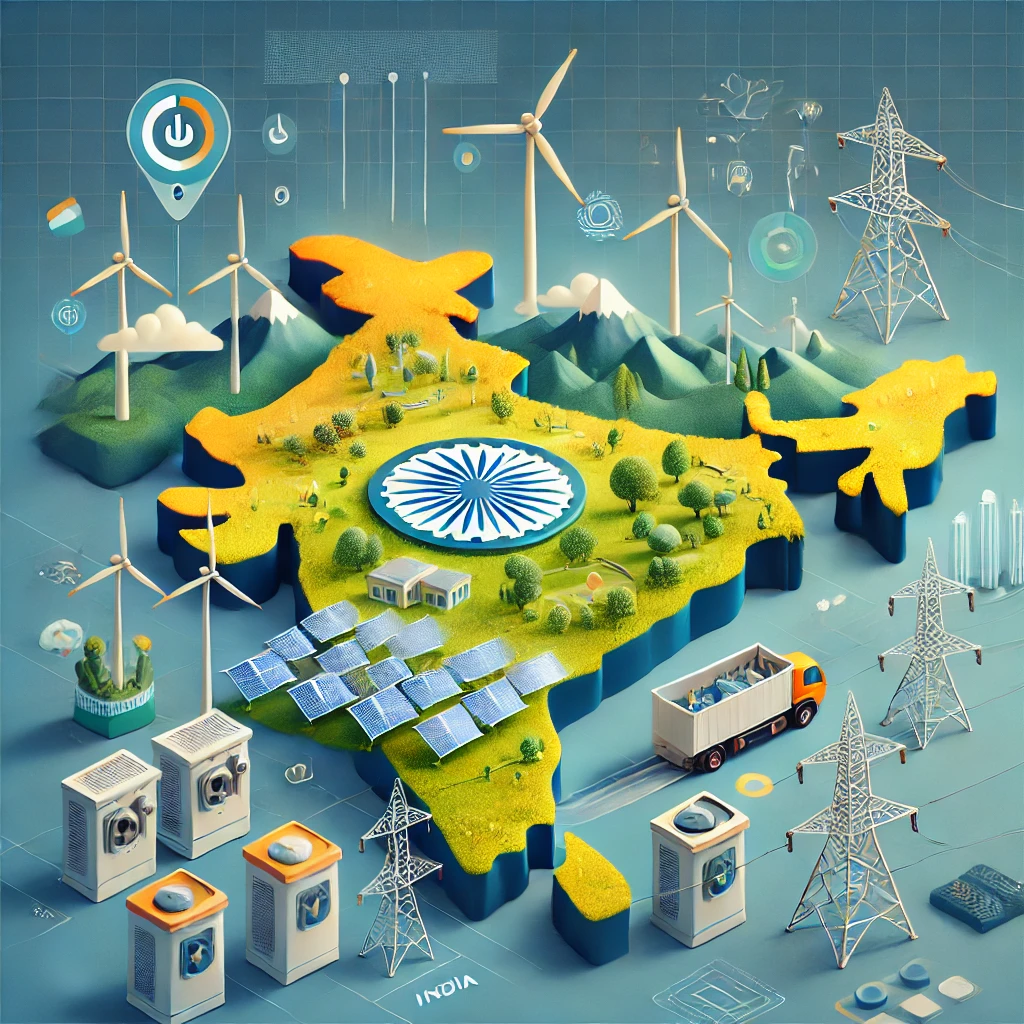It is an important document for understanding the Energy sector in India and will be useful for the UPSC aspirants. They are the blueprint to plan and put into practice the efficient means to meet India’s power demand and supply while given the global and national energy objective.
What is the National Electricity Plan?
The National Electricity Plan is a five-yearly exercise carried out by CEA in terms of Electricity Act, 2003. Its broad objective is to put the Indian power sector in the right strategic direction on how to meet electricity demand, generation, transmission and policy integration.
Key components of the NEP include:
- Generation Planning: Demand prediction for electricity and scheduling capacity involving conventional and/or renewable resources.
- Transmission Planning: Construction of energy transportation and distribution networks and promotion of intraregional and international power exchange.
- Policy Coordination: Co-ordination between the various stakeholders and efficient use of resources in support of economic development.
National Electricity Plan (NEP)
The NEP focus on the short term and long-term framework that needs to be taken to realise India’s energy vision . The latest NEP (2022–2032) focuses on renewable energy integration, grid stability, and investment in advanced storage solutions.
Highlights of the 2022–2032 NEP
- Renewable Energy Targets:
- 500 GW renewable energy capacity by 2030.
- Over 600 GW capacity by 2032.
- Energy Storage:
- Integration of 47 GW Battery Energy Storage Systems (BESS).
- Development of 31 GW Pumped Storage Plants (PSP) for peak demand load balancing.
- Infrastructure Expansion:
- Expanding the transmission network from 4.85 lakh ckm (2024) to 6.48 lakh ckm by 2032.
- Increasing inter-regional transmission capacity from 119 GW to 168 GW.
- Cross-Border Collaboration:
- Strengthening power interconnections with Nepal, Bhutan, Myanmar, and Bangladesh. Potential ties with Sri Lanka, Saudi Arabia, and the UAE.
- Support for Green Hydrogen:
- Meeting the energy requirements for Green Hydrogen and Green Ammonia manufacturing hubs, particularly in coastal regions.
What is the NEP in Electricity?
The NEP in electricity acts as a strategic framework for India’s energy sector. It lays a clear path for addressing growing electricity demand while focusing on sustainability, reliability, and innovation.
Key elements include:
- Capacity Addition: Prioritizing renewable energy sources alongside conventional energy.
- Integration of Renewable Energy: Incorporating offshore wind farms (10 GW planned) and hybrid renewable systems.
- Energy Storage Innovations: Leveraging advanced battery storage and pumped storage technologies to stabilize the grid.
National Electricity Plan CEA
The Central Electricity Authority (CEA), under the Electricity Act, 2003, is the statutory body responsible for preparing the National Electricity Plan.
Roles and Functions of the CEA:
- Advisory Role: Provides strategic guidance to the Central Government on energy policies.
- Technical Standards: Establishes construction and safety standards for power plants and transmission lines.
- Grid Connectivity: Ensures efficient grid connectivity for seamless energy distribution.
National Electricity Plan: Generation
The generation component of the NEP focuses on capacity additions to meet growing demand while transitioning to renewable energy.
- Conventional Energy: Gradual phasing out of coal and gas while maintaining baseline energy supply.
- Renewable Energy:
- Expansion of solar, wind, and hydro capacity.
- Integration of offshore wind farms for diversified energy generation.
National Electricity Plan: Transmission
Transmission planning ensures efficient energy delivery from generation hubs to consumption centers.
Key Focus Areas:
- Transmission Network Expansion:
- From 4.85 lakh ckm (2024) to 6.48 lakh ckm (2032).
- Incorporating innovative technologies for energy efficiency.
- Inter-Regional Links:
- Enhanced capacity from 119 GW to 168 GW by 2032.
- International Connectivity:
- Cross-border interconnections for regional energy cooperation.
- Energy Storage Integration:
- Incorporating BESS and PSP for grid reliability and load balancing.
Conclusion
NEP is a detailed strategic roadmap for the future plan of power sector in India. I found observing the balance that the NEP has put towards renewable energy and storage technologies as well as the resilience of the transmission network as follows the sustainable goal in terms of energy. The NEP is important to UPSC aspirants and has topics that come under energy, environment and infrastructure development. India’s target of achieving 500 GW of renewable generation capacity by 2030 and plans to develop interconnection between countries and continents also put India in the forefront of the global shift from fossil generated energy.
